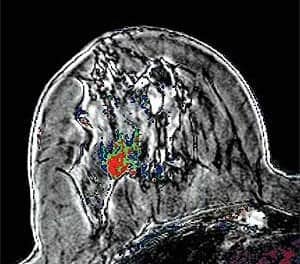 |
While a radiation oncology program differs from other radiology services in significant ways, its basic financial management is similar to that seen throughout health care. As for any other business, there are two primary accounting systems in use: cash and accrual. Cash accounting recognizes expenses when they are paid and revenue when it is received. This method is typically used by households, very small organizations, and governmental programs. Accrual accounting, used by most health care organizations, recognizes expenses when they are incurred and revenues when they are earned.
There are also two basic types of accounting. Financial accounting, which depends on financial statements, describes the status of an organization in broad terms. Management (or cost) accounting, in contrast, describes in detail the cost of the separate activities performed by the organization.
FINANCIAL STATEMENTS
Three kinds of financial statements are used, in financial accounting, to construct an overview of the organization. The first is the income statement (or profit and loss statement), which states revenues and expenses for a designated time period. The second, the balance sheet, functions as a snapshot of the organization’s assets and liabilities at a particular moment. The third statement covers cash flows, describing inflows and outflows over time.
An income statement covers a given period of time (usually a month, quarter, or year). It describes the revenue and expenses recognized during the period, with the timing of their recognition based on whether the organization uses the cash or accrual method of accounting. Income statements generally distinguish between operating and nonoperating revenue and expenses. Operating revenues and expenses relate to the primary work done by the organization; there can be some variation among organizations in how certain items are categorized. Nonoperating revenues and expenses are not associated with core functions; examples include interest income, investment expense, and fund-raising revenue and expense. The final portion of the income statement adds net nonoperating and operating incomes to yield the bottom line. In for-profit organizations, the bottom line is profit (loss). In not-for-profit organizations, it is called increase (decrease) in net assets.
OPERATING REVENUE
Operating revenue consists of the payments earned by delivering services related to the core functions of the organization, and operating expenses are the costs incurred to deliver those services and make the core functions possible.
Operating revenues primarily reflect patient-service revenue, but may also include revenues resulting from contract services, rental income, services provided to physicians, and other activities, so long as those services are reasonably related to the core purpose of the organization.
Gross patient-service revenue is the sum of the charges generated during the reporting period, but this is subject to several deductions because no organization actually receives 100% of charges for services rendered. Reductions in the percentage of charges received are primarily due to acceptance of Medicare and Medicaid assignment of benefits, contractual allowances negotiated with insurance companies, and the provision of charity care. Because the charge structure, payor mix, contractual obligations, and level of charity care provided all vary by institution, deductions from patient-service revenues will vary widely. For this reason, charges are becoming less and less relevant: only net revenue matters.
OPERATING EXPENSES
Operating expenses are the costs incurred to generate operating revenue. In health care, salaries and benefits are the largest components of operating expenses. Debt service is also an operating expense if the debt was incurred in order to finance operating equipment or facilities. Bad debt, however, is not a deduction from revenue; it is treated as an expense. In a capitated environment, revenue loses meaning and expense control is everything.
In radiation oncology, capital assets are a key issue. Their definition usually involves meeting two requirements: a dollar value (for example, more than $500) and a defined useful life (for example, more than 2 years). In cash accounting, a capital acquisition is treated as an expense, with the full amount recognized when payment is made. In accrual accounting, the capital acquisition is treated as a depreciable asset, with the expense recognized over the asset’s useful life. The cost of a capital asset is usually more than the price paid for it. This is important because it is advantageous to depreciate as much as possible in order to reduce operating expenses. The asset’s real cost should be determined by adding the purchase price to the amount spent on renovations, installation, architectural fees, legal fees, financing fees, shipping, and other costs incurred to obtain the capital asset and prepare the facility for its use.
The first step in determining the depreciation expense for a capital asset is to set the asset’s useful life. In health care, most organizations use the American Hospital Association’s guidelines for this purpose. The second step is to choose a depreciation method. The most common is the straight-line method, which depreciates the asset at a constant rate over its useful life. The third step involves computing the actual depreciation expense by dividing the asset’s cost by the number of periods (months, quarters, or years) of its useful life. For example, a linear accelerator purchased for $1 million might have $50,000 added to the cost of the asset for legal review of the contract, shipping, shipping insurance, building renovation, and installation. If its useful life is 7 years (84 months), then straight-line depreciation would be determined by dividing $1.05 million by 84, yielding a depreciation expense of $12,500 per month.
The operating margin ratio is the net operating margin (also known as net operating income) divided by the net operating revenue. This is one of the most important financial markers because it is under the control of management to a greater degree than other financial forces. In radiation therapy, where fixed costs are as high as 80%, this means that procedural volume is of extreme importance. Fixed costs, such as regulatory compliance, personnel, depreciation, and service contracts, are incurred regardless of revenue-generating volume, while variable costs are additional expenses incurred only because revenue-generating activity happens.
FINANCIAL ANALYSES
The most basic form of financial analysis used to determine whether to keep or discard a program is contribution margin analysis. This reveals whether the program generates enough revenue to cover its variable costs and also to contribute to covering a portion of fixed costs. Since these fixed costs would occur with or without the program, a program that can pay some of the fixed costs is considered beneficial (and one that entirely covers the fixed costs allocated to it should almost certainly be kept). Of course, this is purely a financial analysis, and the program’s contribution to the organization’s mission and overall strategy will also be considered.
Variance analysis is a primary role of management. This comparison of budgeted expectations and actual experience can be very enlightening if the causes of variances are identified, particularly for operating income. In radiation therapy, the primary reason for major variances is volume. In a fixed-cost environment, the institution makes money with a high census and loses it with a low census, with few short-term options available to affect the results (for example, referral patterns are unlikely to change quickly in response to management intervention). The common causes of revenue variances are unexpected changes in volume, payor mix, payor policies, or clinical mix (such as a high proportion of palliative cases). Expense variances are typically due to staff shortages (and the need to use more expensive temporary staff), unexpected legal or consulting expenses, erroneous assumptions concerning supply use or cost levels, changes in physicians’ practice patterns, additions to capital assets, and unexpected repairs.
Ratio analysis is a simple form of financial analysis that provides a first-step evaluation of financial status, but it must always be seen as a broad overview, rather than as a specific or definitive analysis. The three main categories of financial ratios used for this purpose are liquidity ratios, profitability ratios, and capital-structure ratios. Liquidity ratios indicate how easily the organization could turn assets into cash (or use existing cash) to cover its cash requirements. Profitability ratios show how well the business is functioning, in terms of profit and loss. Capital-structure ratios describe the capital mix of debt and equity used to finance or purchase assets.
Together, these analyses can provide the organization with a better grasp of what its radiation oncology program contributes to the enterprise, the level of procedural volume needed to make or keep the program self-supporting, and how (or whether) the program might benefit from changes and/or capital acquisitions.
This article has been adapted from Introduction to Financial Management in Radiation Oncology, which the author presented at the annual meeting of the Society for Radiation Oncology Administrators on October 24, 2000, in Boston.
John Felton is COO, Yellowstone City-County Health Department, Billings, Mont.





